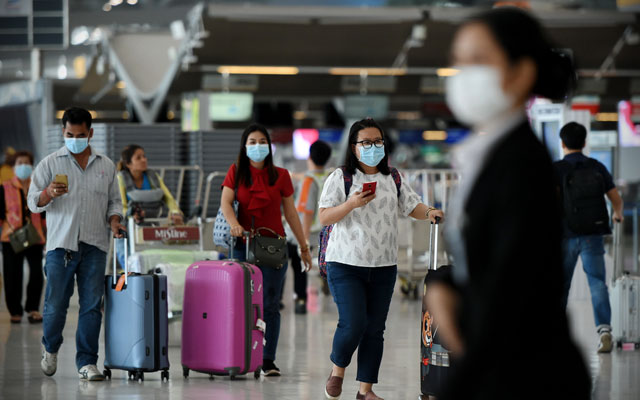
On the rebooting of China outbound, Wolfgang Georg Arlt, CEO, COTRI (China Outbound Tourism Research Institute) commented: “It is urgent that all countries in the region come to an agreement with China to accept a procedure which does not include quarantine, but accepted standard testing before and after each flight or border crossing as well as agreed protocols for safety and sanitation standards for hotels, sights, transportation, etc in each destination.

“If a country cannot guarantee such standards for the whole country, parts – especially islands – can be opened first, like Bali, Phuket, Hawaii, etc.”
Arlt added: “COTRI is leading a group of experts offering national and regional governments and companies in the Asia-Pacific region a new strategy paradigm – Advantage: Tourism for the Successful Recovery and Resilience of the Tourism Industry – with regard to the Chinese source market, minimising the problems of overtourism, seasonality, strained relations between guests and hosts in time for the coming post-Covid-19 wave of Chinese visitors.”
The Association of Asia Pacific Airlines (AAPA) said that Beijing can take the lead to stimulate travel back to the region.
AAPA director-general, Subhas Menon, commented: “China can take the lead as it has enough experience and has done a very good job in suppression and containing the spread of Covid-19.”
With low infection rates in most countries in Asia, Menon urged governments to adopt a risk-assessment model, opining “there is no need to be so risk-averse”.
“If this can happen by the end of the year that would be great. But realistically, it is not going to be in place until 1Q2021.”
Governments need to “pay more heed to international travel”, Menon added, and if this is expected to happen only in 2024/25, some 115 million jobs are at stake.
Meanwhile, Japan Airlines has resumed outbound bookings for its Dalian-Narita and Guangzhou-Narita services, with reports stating that Japan would ease inbound business travel restrictions from November.
Shirley Yuen, Japan Airlines’ regional director – global and strategic sales Asia Oceania Sales Office, pointed out: “Currently, only Japanese nationals, foreign permanent residents and long-term business visa holders can enter Japan.”
Business-purpose visas have opened, but quarantine is still in place, while student visas are for those who are already studying in Japan but not those newly-enrolled.
Compared to Hong Kong, Taiwan and Korea, Yuen shared that the search volume from China to Japan has been comparatively higher.
When Cebu Pacific Air operated charters from Shanghai to Boracay last year, Ong Kee Keat, adviser, network strategy and development, said the China inbound market overtook South Korea.
The budget airline is currently “being careful with network resumption”, with Ong adding that “charters are a development investment”, as operators would have to block hotels for a year and build a sustainable structure.
The LCC’s network in China includes Beijing, Shanghai, Guangzhou, Xiamen and Shenzhen, and Ong said there were hints from the Bureau of Immigration that the Philippines may open in January 2021.
Ong continued: “The Philippines is the closest tropical country (with long stretches of beaches) in South-east Asia to China, compared to Vietnam which has a long but rocky coastline. Boracay is well known to the Chinese compared to beach resorts in Palawan or Bohol and we are depending on the tourism board to do more.”










